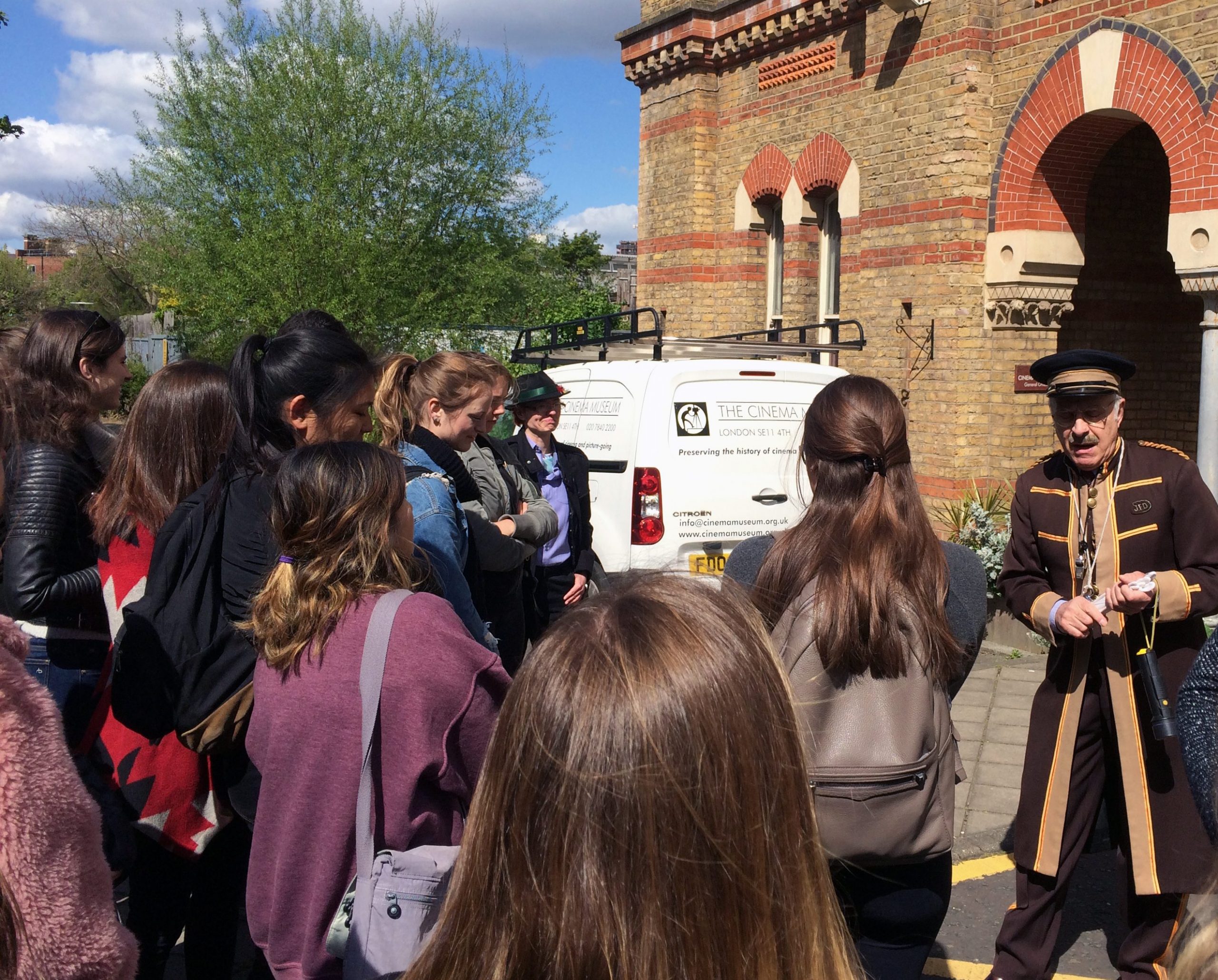Gender and Media Literacy in London
This semester, as part of the USC Annenberg School for Communication and Journalism’s London semester abroad, a new, cutting edge class has been added to the curriculum, entitled Gender and the News Media. The course aims to stimulate critical thinking and increase media literacy about news as it relates to gender, sexual identity, and issues relevant to the queer and trans communities. The class discusses key theoretical concepts, historical milestones, and contemporary issues facing journalists and media consumers of all gender identities.
As part of the course, the class recently visited the Cinema Museum in Elephant & Castle, South London. The visit contextualized media representation of the origins of cinema, and how media coverage of films and the film industry simultaneously maintain and challenge gender-related social functions. During the visit, the class used an ethnographic approach to uncover the historical and ongoing underreporting of women’s contribution to the making of motion pictures behind the camera. It also considered film critic Laura Mulvey’s notion of ‘the male gaze,’ and investigated how expectations placed on men’s gendering within news media has led to current practices within the industry.
Back in class, the students took part in a live-action showing of Rocky Horror Picture Show to ensure a cohesive understanding of event cinema and its importance within globalized news media. Students were introduced to the background of the film and stage show, and participated using a variety of scripts and props. This led to a detailed discussion, referencing the work of cult theorists Xavier Mendik and Mikel Koven, as to how reportage of the show led to the cultural perception of Rocky Horror screenings as spaces for the communal exploration of gender expressions and identities. The group considered how the continued interest in the show resulted in the 2016 Fox remake and how newly established discourses – such as focuses on diversity and the perfection expected in the ‘Instagram age’ – might have contributed to the revisions therein.
By utilizing site-visits like the Cinema Museum in conjunction with related readings and key texts such as Rocky Horror Picture Show, the class aims to counter the thinking around gender and media representation that prescribes a set of ‘right’ and ‘wrong’ ways to view gender, sexuality, and identity, and instead question the power and impact of these constructs, and how they are represented across the world.
